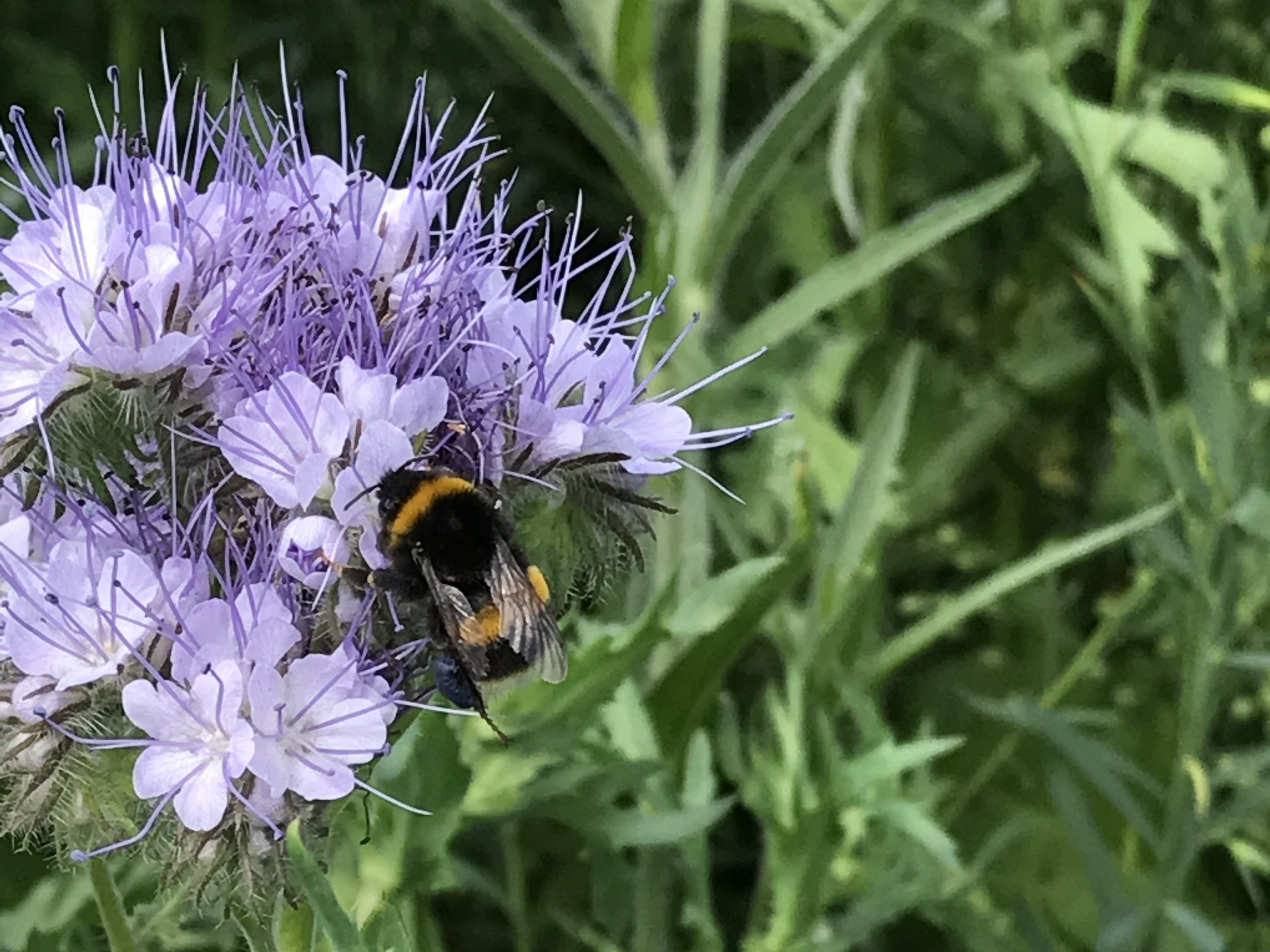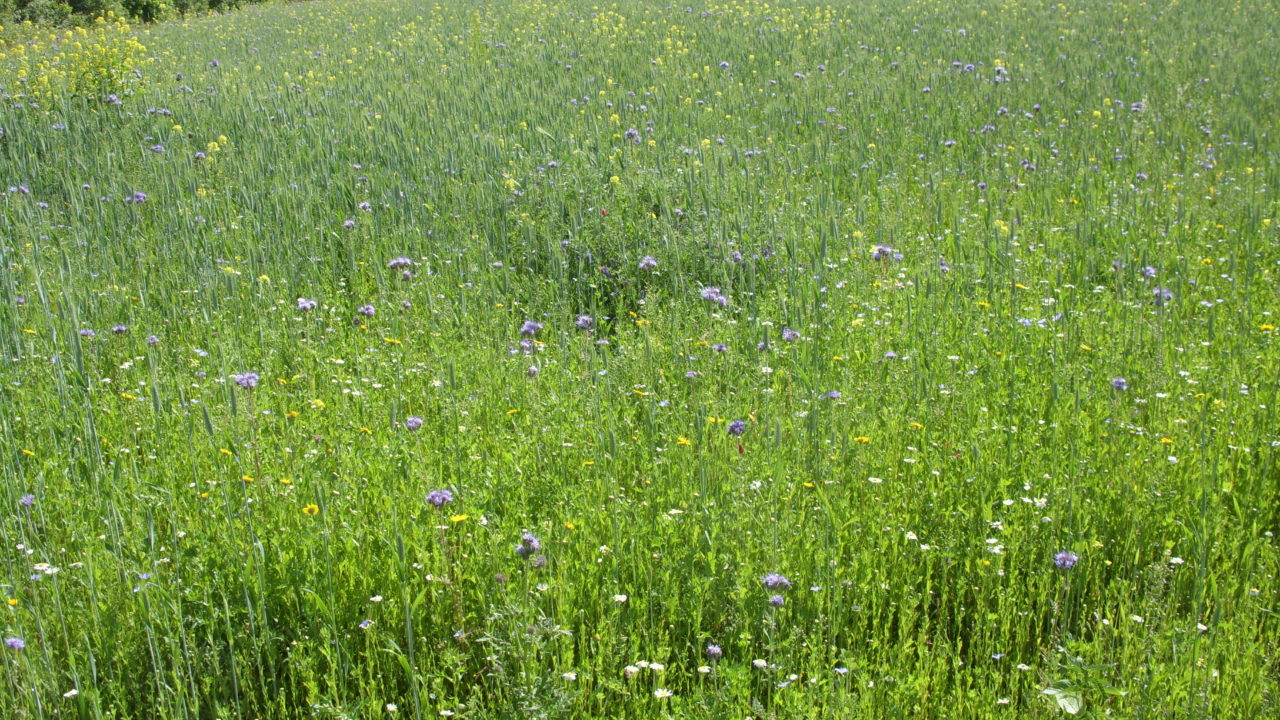With the Green Low-Carbon Agri-Environment Scheme (GLAS) rolled over for at least another year, the wild bird cover crop option has been an unprecedented success for John Howard of Rathcormac in Co. Cork.
He has seen a huge move towards his wild bird cover crop seed mix, which was specially formulated for the scheme back in 2015.
Sales increased steadily each year
John is the sole Irish agent for well-known game crop suppliers, Bright Seeds of the UK.
When they were designing the seed mix, John worked with Bright’s managing director Chris and together, they came up with this unique pre-mixed GLAS Wildbird Cover Crop.
Such is the success that sales have increased steadily each year since its inception.
Farmers are getting more tuned in and are anxious to do the job well and most of them love to see the results and the benefits for the wildlife on their farms from using this mix.
In the beginning, many farmers saw the scheme simply as another source of income but now, while the extra income is badly needed in most cases and is much appreciated, they do want to see a good crop established also.
Triticale instead of oats
John deliberately did not include oats in the seed mix because it draws rats and crows and triticale is the Department of Agriculture’s preferred cereal element for the wild bird cover crop anyway, and with good reason too, according to John.
He is not saying that rats will not be attracted to his mix, if rats are a problem in a particular location, but because the triticale stays standing all year without lodging, the feeding is off the ground and so it does not draw them in big numbers.
The other seeds are so small that the vermin won’t go mad for them. Also, the triticale grain is enclosed in a large layer of chaff which makes it less attractive to crows who find it difficult to extract the grain and so they leave it alone until they are finding other food sources scarce in mid-winter.
If oats are used, it tends to lodge early, drawing all sorts of vermin and crows and will be cleaned out by autumn – depriving the smaller birds of the food that the scheme was intended for.
Wild bird cover crop
This is a very affordable and good mix, which contains the exact ratios and varieties of seeds recommended by the Department of Agriculture.
Simply called the GLAS Wildbird Cover, it contains 88kg of seed per hectare, made up of triticale (75kg), linseed (7.5kg), mustard (5kg) and phacelia (0.5kg) to give it colour and life, as well as attracting many endangered bumble bees and butterflies.
It is packed in 22kg bags and the recommended rate is four bags/ha if drilling, and five bags if broadcast.
The phacelia is an absolute magnet for attracting bumblebees and John would like to see it included in some way in the bee options of the scheme in future years.

The reason for using both mustard and linseed in the mix is all about guaranteeing a good take after sowing.
If soil conditions or a particular plot are not suitable to one species, then you have the chance of the other striking, thus ensuring a decent crop.
The mixture is priced at €40.00 per bag at Rathcormac and discounts are available for group purchasing or bulk deliveries.
Crows and ground preparation
The one point that John is continually stressing is that the ground must be well-cultivated, preferably ploughed every year to bury all trash but, whichever method of cultivation is used, it is vital that the crop must be covered properly after sowing.
Direct drilling is the best option and this seed mix drills very well with all the machines. Covering the crop is where many farmers fall down and the crows simply devour the triticale even before it germinates.
Even after direct drilling or covering the seedbed, the crows need to be kept off the field for just one week or so, because they will clean out the ground of triticale in just one morning.
The problem is that very often, these plots are not in tillage areas and once cultivated, every crow for miles around will descend upon it.
If broadcasting the seed, covering should be done with a light run of a power harrow, rotavator or triple K.
A chain harrow or grass harrow is not good enough and will be a waste of time as it won’t cover the triticale. Rolling after covering is not important but it will help, especially in dry weather.
After one week of scaring the crows, you can close the gate and walk away – but that first week is crucial for the establishment of the crop.
Covid-19 impact
John offers a nationwide delivery service whether by courier or personally, and he will be on the road everyday now travelling all over the country, in line with Covid-19 guidelines. See the website for John’s routes each day.
He has a great loyal customer base and makes annual pilgrimages all over the country as far as Mayo, Sligo and Donegal a few times every year.
For online purchasing, visit www.rathcormacgunclub.com. Small lots have a two-day courier delivery service. Also on the website, there is a short presentation on sowing guidelines, which answers many of the queries that John receives daily.
Other mixes available
To complement the wild bird cover crop, John also supplies a six-pack blend of kale, which is made up of a blend of six varieties in one bag, so that if one is not suitable to your ground, there are five others that should come through. It is €40.00 per acre bag.
He also stocks a new late-sown, but very fast establishing, utopia kale which is recommended to sow in July and produces a good crop by November. It is of African origin and is a cross between black mustard and wild kale. It grows very fast and has good frost tolerance.
Various other game crop mixes, such as John’s Delight, are also available online. This is a favourite with gun clubs and conservationists or anybody that wants to go that extra step.

It is very similar to the basic wild bird cover but has some extra varieties in it, such as gold of pleasure, crimson clover, cornflower and poppies.
These extra species make it very attractive to wildlife and appealing to the eye for their colour and biodiversity value.
Wildflower meadows
Wildflower meadows are another hobby of John’s and last year he launched a new Perennial Pollinator Wildflower Meadow seed mix made up of the species that you will find in the old-fashioned, traditional hay meadows.
This mixture will be slow to establish as it needs to be cut back a few times in its first year, but after that, it will be permanent.
For a faster establishing, cheaper and more colourful wildflower meadow, he has one made up mainly of annuals which will provide unbelievable colour and insect life just eight weeks after sowing.
This mixture is a magnet for attracting both bumble bees and native honeybees because of the phacelia and borage in it and should last from three-to-five years, if looked after properly.

With all the emphasis nowadays on biodiversity and the decline in our bee species, the meadow will be buzzing with bee life six-to-eight weeks after sowing and will continue to attract bees until the weather gets cold.
It will flower right up to Christmas and from then on, will attract thousands of finches for the seed.
For anyone remotely interested in biodiversity, John states that this must be tried for the sake of €23.00 for the 100 per square metre packet. Find a corner near the yard or a sunny headland and you won’t be disappointed.
Visit the website for more information and details where you can also purchase poppies, borage phacelia and sunflowers on their own in small packets.
There are also a few other biodiversity options available on the website, such as the one created with Donal Sheehan of the BRIDE Project. See the website for details: https://rathcormacgunclub.com/product/bride-biodiversity-mix/
Wild bird cover stockists wanted
John would love to hear from farm supply outlets interested in stocking his GLAS Wild bird Cover Crop seed mix, especially in Monaghan, Donegal, Dublin, Meath and along the east coast.
Current stockists of the GLAS Wildbird Cover:
- McDonnell Bros, Coolagown, Castletownroche and Saleen, Co. Cork. 025-31166;
- Creamery Farm Supplies, Croom, Co. Limerick. 087-4155233;
- O’Sullivans Beaufort Bridge Shop, Killarney, Co. Kerry. 064-6644397;
- Pat Tierney Supplies, Kilkishen, Co. Clare. 086 2406035;
- CC Agricultural Consultants Ltd, Drumamry, Killeshandra, Co. Cavan. 049-4334462;
- Ward Agricultural Consultants, Doontas, Killasser, Swinford, Co. Mayo. 087-9193371;
- P Coffey and Sons Ltd, Lecarrow, Co. Roscommon. 090-61114.
For more details, contact John at Sunnyside Fruit Ltd, Rathcormac, Co. Cork; phone: 025-36253; or email: [email protected]; or click here.

